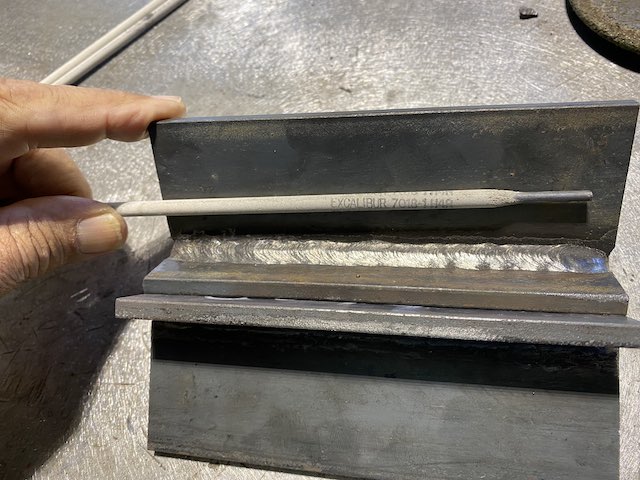CONARC 49C vs Excalibur 7018
Conarc 49c vs Excalibur 7018 striking tips


Earlier this year I was at the Lincoln Electric welding training center filming the 2022 Worldskills Welding competition.
Andrew Cardin is a good friend of mine and was a previous competitor and invited me to the event.
While we were there we came across these packs of 7018 rods called CONARC 49C Sahara Ready Packs … small vacuum sealed packs of 7018 electrodes.
So we thought it would be interesting to compare the CONARC 49C 7018 rods to EXCALIBUR 7108 to see if we noticed any differences.
CONARC 49C is mainly sold outside the USA to the European Market and since we were at an international welding competition, these packs of CONARC 49C were in the consumable storage area.
So we got permission to grab a pack.
BEADS ON PLATE with Andrew Cardin doing the welding and me doing the filming
For starters Andrew ran a bead on plate with each rod to see if we could notice a difference.
We used a LINCOLN Invertec V205T on 125 amps DCEP reverse polarity and the main difference we noticed was that the CONARC 49C seemed to need more amperage than the EXCALIBUR 7018.
Since 125 seemed a little cold on the bead on plate, we bumped up amperage to 135 for the 2F tee joints.
The amperage range shown on the Sahara Pack of CONARC 49C rods was 80-130 but 135 amps seemed about right for the CONARC 49C rods.
2F tee joint observations
The Excalibur 7018 ran as expected and at 135 amps, was fairly easy to strike the arc and keep a stable puddle going from the start.
The CONARC 49C started the arc very easily but at the beginning of the weld seemed to have a very slaggy puddle with slag not going behind the puddle at first.
The CONARC 49C puddle got better as Andrew progressed down the joint but the first inch or so of the weld had some BBs and was hard to control.
We might have had better results by using a more extreme electrode angle for the first inch or so to help push the slag back but we tried to keep things the same for each rod.
Usually, I like to test welds like this for penetration by the cut and etch macro etch test method but since I was out of town, I wasn’t able to do that.
Maybe next time.
Comparison tests like this are interesting and I always learn something but they are not really conclusive since the welding is done by a real human.
I just wanted to bring you along with me as I tried some CONARC 49C 7018 rods.
















